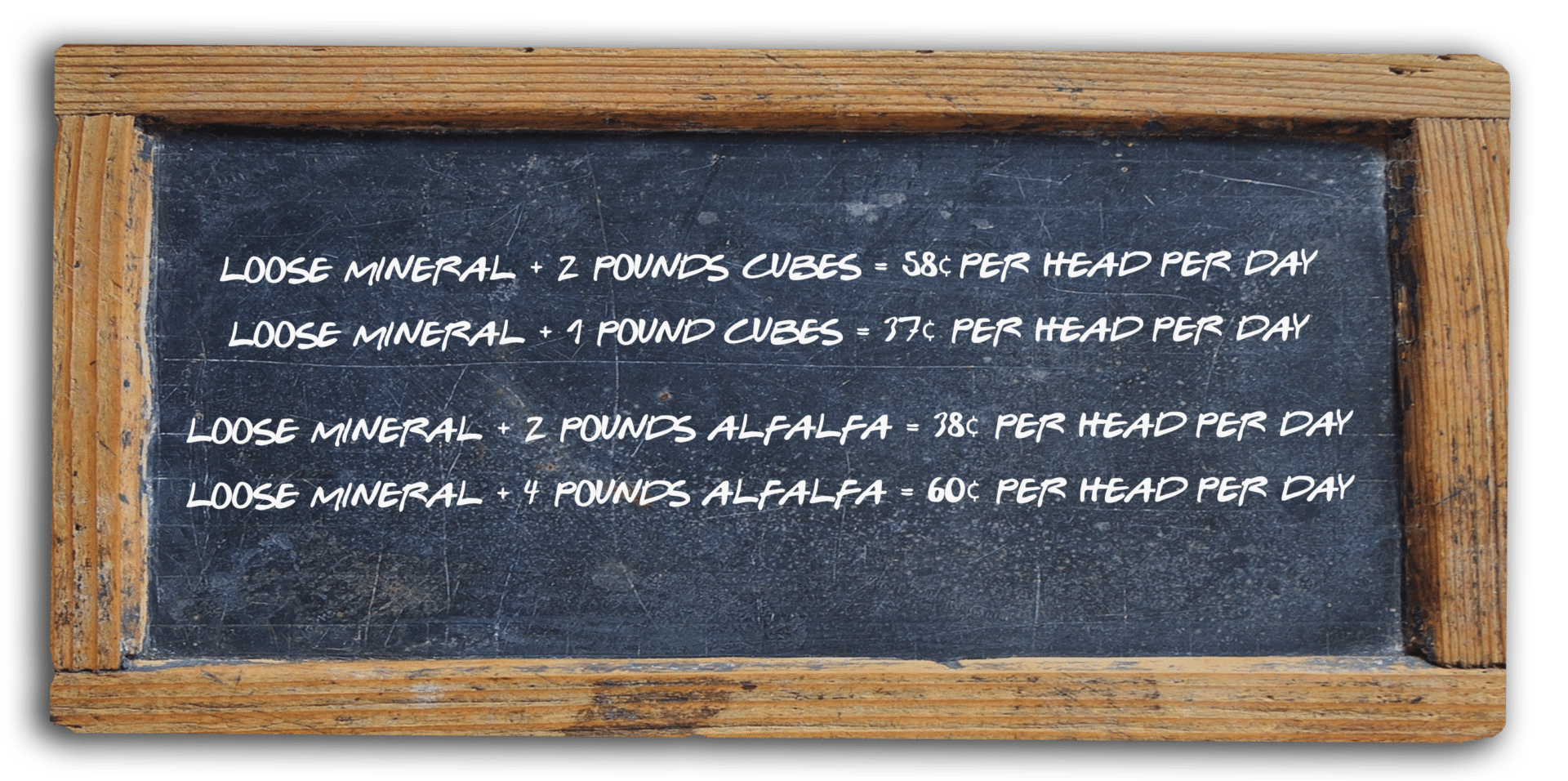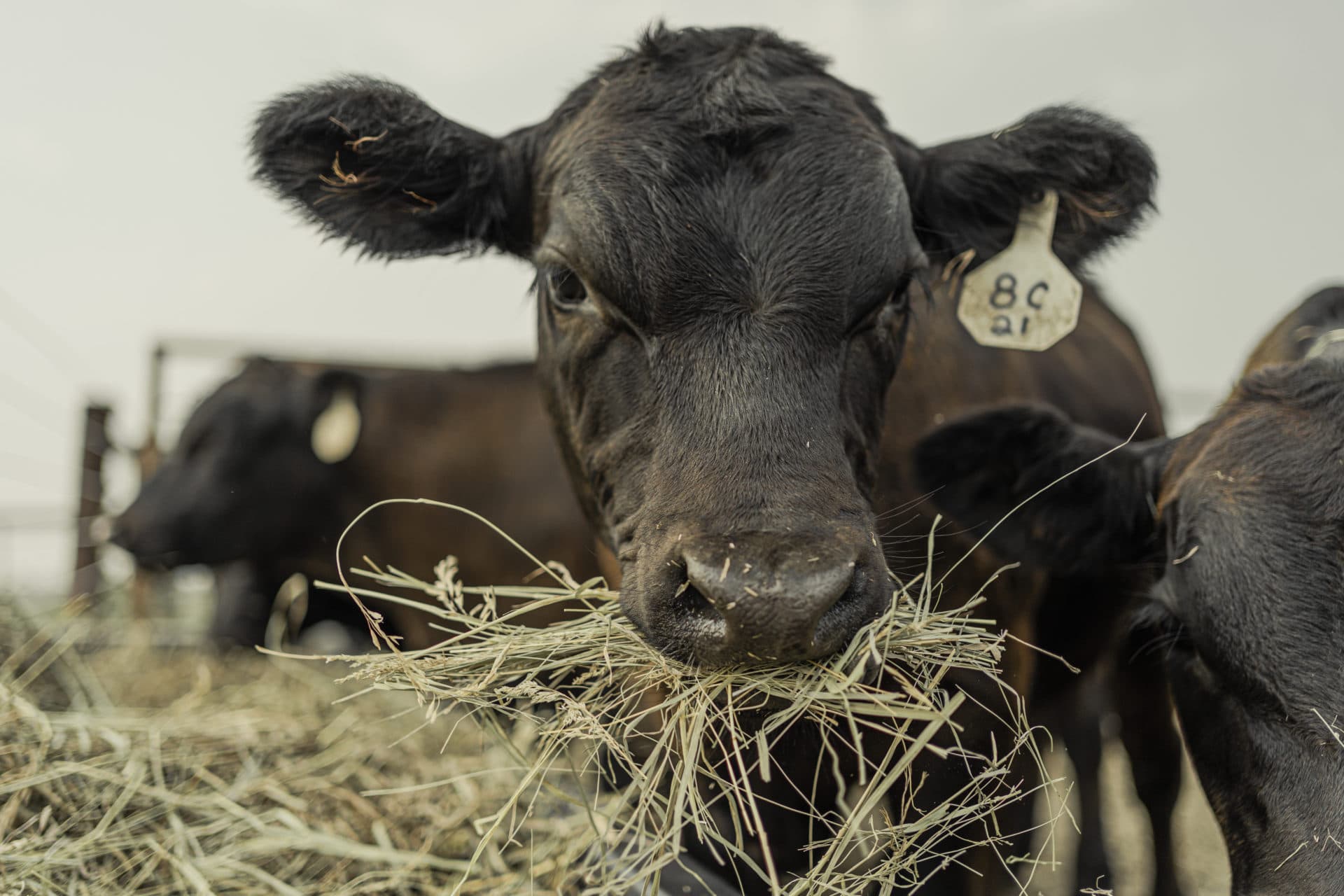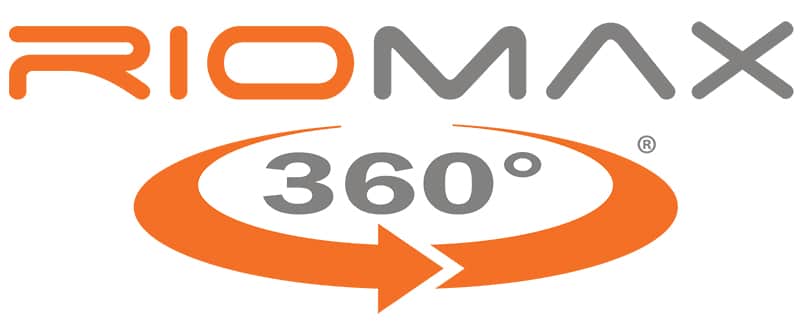Last updated on August 18th, 2025 at 11:18 am
“We can’t solve problems by using the same kind of thinking we used when we created them.”
That oft-quoted phrase attributed to Albert Einstein sums up much of life. Question is, does it describe your cow herd?
Let’s ask that question in other ways. Are your cows breeding up at a level you’d like to see? Are your calves healthy and vigorous when they hit the ground? When they’re weaned? Could your stocking rate be better? What would your bottom line look like if your cows ate less hay over the winter and maintained body condition? How about your weaning weights?
If any of these questions strike home, maybe it’s time for some serious pencil-pushing, especially when it comes to your mineral supplements.
Analyzing Ranch Input Costs
In fact, doing a cost/benefit analysis on all your inputs is a good business move, says Trevor Greenfield, founder and co-owner of Riomax®. “I’m a family business owner. I don’t want to spend an extra dollar on anything ever, unless I can see how that dollar can either help me save money or make money.”
So are his customers. So why are Riomax® tubs experiencing sales growth at a time when saving money is important? Because, Greenfield says, ranchers are looking hard at the dollars they spend on inputs. And by doing a cost/benefit analysis, they’re discovering that while Riomax® tubs cost more upfront, they are actually the cheapest mineral you can buy when they look at cost-per-head-per-day or cost-per-cow-per-year.
Here’s why.
First, some assumptions.
In calculations by Boone Huffman, a Chadron, Nebraska, rancher, he assumes you’ll pay $1,000 per ton for loose, inorganic, bagged mineral. At average consumption, that’s 16 cents per head per day. Also, assume $420 per ton for 32% protein cubes and $220 per ton for 20% protein alfalfa as a protein supplement.

On average, Riomax® tubs cost 45 cents per head per day. For a semi-load, it’s 39 cents per head per day. The math is pretty simple, Huffman says.
Let’s do another math problem. Assume you’ll buy protein tubs at $800 per ton. $800 divided by 2,000 comes out to 40 cents per pound. Now assume a very conservative daily consumption of three-fourths pound per head. Three-fourths pound, or 0.75, comes out to 30 cents per head per day.
Remember, however, that you still need to feed mineral. While the industry average for loose mineral is around 15 cents per head per day, let’s assume you got a really good deal and you’re feeding it at 12 cents. So 30 cents plus 12 cents is 42 cents per head per day for a minimalistic protein and mineral supplementation program.
Again, the industry average for Riomax® tubs is 45 cents per head per day. That's for a complete quality mineral and digestion package, and it's not factoring in any of the results that the product consistently shows on ranches across North America. This math problem isn't hard to solve either.
"But you're too high-priced."
Now let’s look at the elephant in the room. Riomax® is, upfront, a very expensive product. And managing cash flow is an important part of managing a ranch. That’s why doing a careful cost-benefit analysis is important, because it may well show that spending a little more now will save you a whole lot more later.
That’s what Alec Oliver discovered.
The Seneca, Oregon, rancher has been using Riomax® tubs for around eight years. At the outset, he says, “I was pretty skeptical, going ‘This is just another input.’” But he stayed with the program, putting the tubs in front of his cows in the fall and again in the spring.

Where he saw a direct economic benefit is over the winter. The technology in the Riomax® tubs allows cattle to squeeze more oomph out of their forage intake.
Oliver saw a reduction in hay consumption of 5 to 7 pounds per head per day. Let’s assume it costs $200 a ton to bale your hay, including direct costs plus indirect costs such as paying yourself for your time, amortization on the equipment, etc. That comes out to 10 cents per pound.
If a cow eats 30 pounds of hay a day as fed, that’s $3. If consumption goes down by 5 pounds per day, she’s now eating 25 pounds and her consumption costs $2.50 cents. Assume a 120-day winter feeding period. So 50 cents x 120 days = $60 less per cow over the winter feeding period.
Reducing Inputs & Calculating Hay Savings
As shown in the examples above, adding Riomax® tubs to your program allows you to eliminate loose mineral and protein inputs. Let's say you were paying the lowest calculated price of those inputs at 37 cents per day. Compare that to the 45 cents per day for Riomax®, which is just 8 cents more, before calculating any hay savings. Add 50 cents per day in hay savings (as calculated in the scenario above). Now, you're coming out 42 cents per head per day ahead over the winter feeding period.
The above examples are why Greenfield encourages ranchers to do a cost/benefit analysis, not on upfront price by the ton, but on a per-head-per day or per-cow-per-year basis. And do that analysis on all your inputs, he says.
Doing that, he says, allows you to make the best decisions you can—for today, for next year, next decade, next generation. “It’s about more than just tubs,” he says. “It’s about shouldering up with the ranching industry and doing the right thing by them, for their production, for their profitability, for their efficiency.”
Don't Be a Minimalist. Be an Economist.
Greenfield relates a conversation he had with a Wyoming ranch manager as they bounced along in his pickup looking at cows. The ranch is owned by absentee landowners who are focused on the bottom line. Thus, the manager is known as a low-input cattleman.
“People say I’m a minimalist,” he told Greenfield. “We’re low input. That’s our production model. I’m not a minimalist. I’m an economist.”
He feeds Riomax® because he’s not making decisions on highest price or lowest price. He’s making his decision on greatest return on investment. “That’s the mentality that will help people survive, because then you’re making your decisions not on emotion or highest or lowest price upfront, you’re making it on economics,” Greenfield says. “You making your decisions on what will drive the economic model of your ranch the most.”
That’s why Kurt Loma, a Phillipsburg, Montana rancher, says, “Riomax® is only expensive if you can’t do math.”


